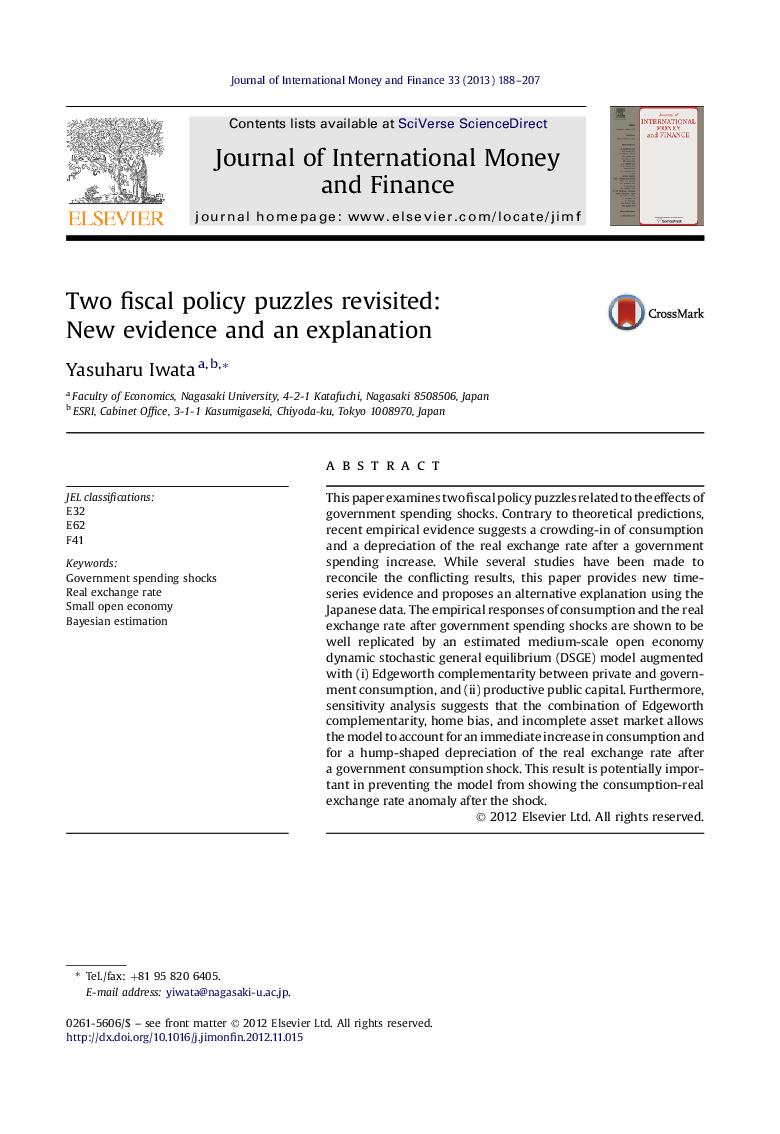| Article ID | Journal | Published Year | Pages | File Type |
|---|---|---|---|---|
| 963962 | Journal of International Money and Finance | 2013 | 20 Pages |
This paper examines two fiscal policy puzzles related to the effects of government spending shocks. Contrary to theoretical predictions, recent empirical evidence suggests a crowding-in of consumption and a depreciation of the real exchange rate after a government spending increase. While several studies have been made to reconcile the conflicting results, this paper provides new time-series evidence and proposes an alternative explanation using the Japanese data. The empirical responses of consumption and the real exchange rate after government spending shocks are shown to be well replicated by an estimated medium-scale open economy dynamic stochastic general equilibrium (DSGE) model augmented with (i) Edgeworth complementarity between private and government consumption, and (ii) productive public capital. Furthermore, sensitivity analysis suggests that the combination of Edgeworth complementarity, home bias, and incomplete asset market allows the model to account for an immediate increase in consumption and for a hump-shaped depreciation of the real exchange rate after a government consumption shock. This result is potentially important in preventing the model from showing the consumption-real exchange rate anomaly after the shock.
